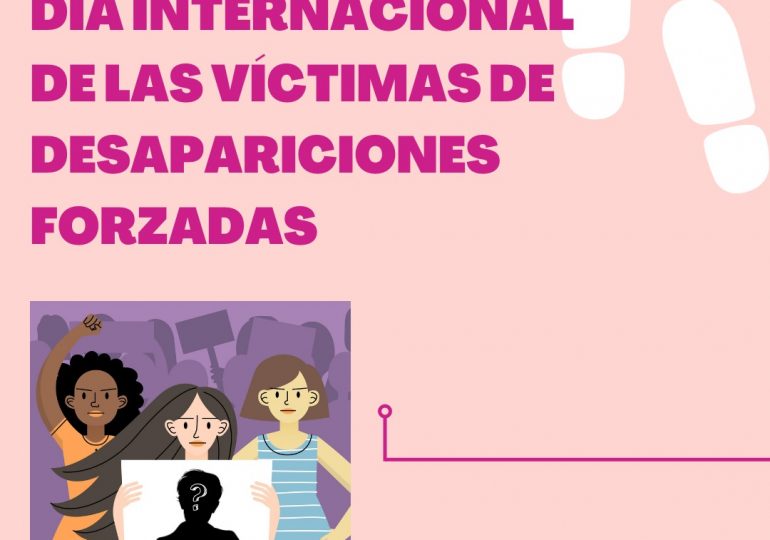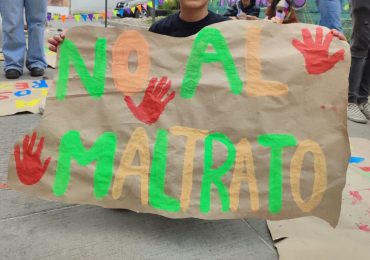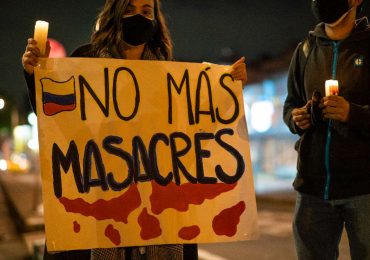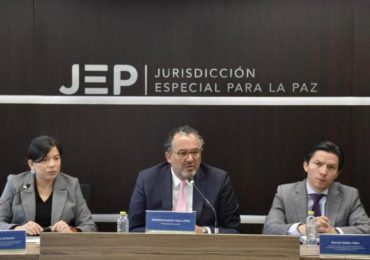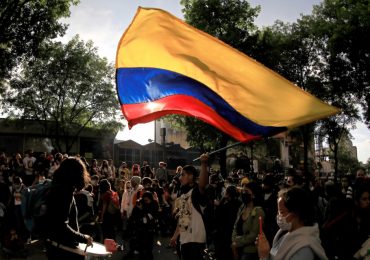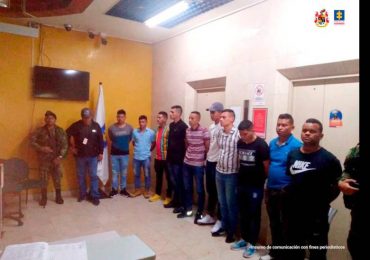Enforced disappearance, used as a strategy to instil terror in citizens, transcends its direct victims and deeply affects communities and whole society.
Por Sabrina Certomà, Giulia Citerio, Beatrice Follesa, Redaccíon Contagio Radio
August 30, 1982 marked the establishment of the International Day of the Victims of Enforced Disappearances. According to the most recent report from the Truth Commission, in Colombia, between 1985 and 2016, approximately 121,768 people are counted as victims of this heinous reality. At the same time, the Memory and Conflict Observatory of the National Center for Historical Memory (CNMH) establishes a figure of 80,742. Both figures demonstrate the inherent dehumanization of the conflict. However, due to fear of reporting and limited access to justice, there is a significant underreporting, leading to statistical analysis suggesting that the number of enforced disappearance victims could reach up to 210,000 people.
Given the vastness of this phenomenon, since August 30, 2011, the International Day of the Victims of Enforced Disappearances is commemorated in line with United Nations General Assembly Resolution 65/209. This day aims to draw attention to the global growth of enforced disappearances.
No circumstances whatsoever, whether a threat of war, a state of war, internal political instability or any other public emergency, may be invoked to justify enforced disappearances.
Article 7 – Declaration on the Protection of all Persons from Enforced Disappearance
Read all the Declaration on the Protection of all Persons from Enforced Disappearance
Enforced disappearance, used as a strategy to instil terror in citizens, transcends its direct victims and deeply affects communities and whole society. This scourge is not limited to a specific region; rather, it is a global problem that has evolved over time and now presents itself in complex situations of internal conflict and political repression. The practice of enforced disappearance has transformed into a crime committed by various actors, and its effects spread across multiple levels. Human rights defenders, victims’ families, witnesses, and lawyers working on enforced disappearance cases often face harassment and repression. States, in some cases, use the fight against terrorism as a pretext to evade their responsibilities. Persistent impunity is also a cause for concern.
The direct victims of enforced disappearance endure unimaginable suffering. They are separated from their legal and social environment, stripped of their rights, and delivered to their captors. Even if they survive the nightmare, they can be marked for life by physical and psychological scars. For families and friends, uncertainty and anguish are constant. Communities also suffer, as the disappearance of a member affects the economic and social stability of many families.
The legal distinction between «missing persons» and «victims of enforced disappearances» is crucial. The first is a broader category that can include individuals missing due to a variety of circumstances, while the second specifically refers to the practice of enforced disappearance as an intentional crime perpetrated by government agents or affiliated groups. The International Convention for the Protection of All Persons from Enforced Disappearance establishes fundamental principles to address this crime. It underscores the families’ right to know the truth about the fate of their disappeared loved ones and the victims’ right to receive reparation and compensation. This Convention recognizes that enforced disappearance is a serious human rights violation and may constitute a crime against humanity.
The International Day of the Victims of Enforced Disappearances, observed on August 30th, was established to recognize the importance of addressing this issue and remembering the victims. Through the Declaration on the Protection of All Persons from Enforced Disappearances, the international community seeks to combat impunity and provide justice to the victims and their families. Enforced disappearance is a heinous crime involving complex legal aspects that intersect different branches of international law. The fight against this practice must continue, ensuring that victims are recognized, justice is served, and communities and society as a whole are protected from this form of state terrorism.
Humanitarian extrajudicial investigation and forensic investigation need to be visible. We search throughout the country, cross borders, and travel rivers, seas, and mountains to find without prejudice or labels all the people that the armed conflict took from us. We miss all the people who were disappeared, and we will continue searching until we find them and reveal the reparative truth about what happened
Luz Janeth Forero Martínez, Director of the Unidad de Búsqueda de Personas dadas por Desaparecidas (UBPD)
When faced with the atrocities of war, words are often insufficient, and silently sought confirmation in images. In the Nazi Holocaust, the faces of Jews in striped pajamas, a symbol of death, stand out. In Colombia, visual examples include assassinated leaders and presidential candidates. Dehumanizing images of soldiers in makeshift cells, exhibited as examples of cruelty, also endure. The bodies of the slain, covered in white blankets, graced the pages of newspapers. But what about the victims of enforced disappearance? How do we visualize this atrocious act in the Colombian conflict? Public memory galleries, displaying the faces of the disappeared and murdered, stand as emblematic expressions of memory in Colombia.
Today, 30th August, is the International Day of Victims of enforced disappearance; if you need any refence about the commemoration of this day you can read:
30 August – International Day of the Victims of Enforced Disappearance of ICMP.
International Day of the Victims of Enforced Disappearances, 30 August
Read more:
Enforced disappearance a serious human rights violation, used to spread terror – United Nations
ENFORCED DISAPPEARANCES – Amnesty International
Also watch:


